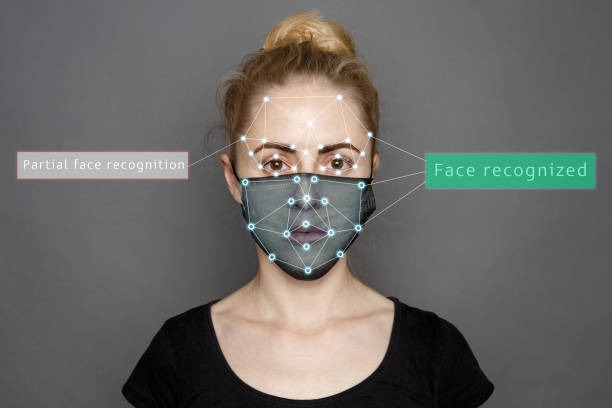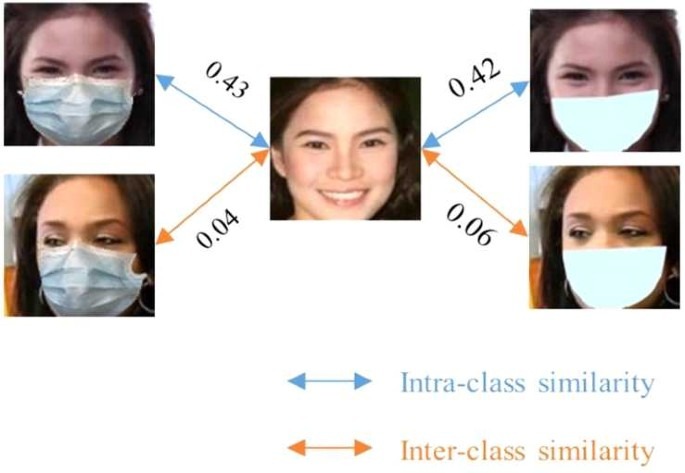
Table of contents
- Why Masked Face Recognition Matters
- How Masked Face Recognition Works Today
- Key Algorithmic Techniques
- Performance Comparison Table
- Real-World Accuracy and Case Studies
- Overcoming Common Challenges
- Implementing Masked Face Recognition in Your Operation
- Privacy and Ethical Considerations
- Additional Benefits of Masked Face Recognition
- More Real-World Applications
- Tips to Boost Accuracy Further
- Ensuring Fairness and Reducing Bias
- Continuous Model Updating
- User Education and Clear Policies
- Key Takeaways
- Future Directions for Masked Face Recognition
- In a Nutshell
Masked Face Recognition was thrust into the spotlight when the majority of the world adopted mask wearing. Originally there was much concern regarding how the biometric systems would adapt to masks, thinking the lower half of the face would completely cut off access. Modern advancements have development Masked Face Recognition that is outperforming historical understandings quickly and robustly.
In this blog we will dive deep into how new algorithms utilize significant chunks of masks, why accuracy is improving massively, and explain what it means for our security and lives moving forward.
Why Masked Face Recognition Matters
Face coverings are still commonplace in many situations where security checks, office lobbies, and even smart phones use face recognition to validate a person’s identity. When wearing a face covering, the systems have to change its expectations or break. Masked Face Recognition helps to keep things running smoothly. Masked Face Recognition helps to increase protected privacy as close matches due to a masked face can be avoided or minimized. Sectors such as banking, and travel, rely on effective recognition to help keep process times low and risk down.
How Masked Face Recognition Works Today
Today’s Masked Face Recognition systems use machine learning, often deep learning. The networks that do the learning acquire the ability to understand unique identifiers around the eyes, forehead, and temples behind the mask. The engineers behind the models train these models on millions of images, both masked and unmasked. Masked augmentation is also done synthetically, where the software digitally adds the mask to an unmasked image. This modeling process eventually helped the models learn the patterns behind the masks, thus increasing accuracy.

Key Algorithmic Techniques
Early systems treated masks as noise. They lost track of faces when mouths and noses disappeared. Today’s solutions focus on three main ideas:
- Feature extraction around visible landmarks.
- Attention modules that ignore masked areas.
- Mask-aware training with balanced datasets.
These innovations allow Masked Face Recognition to see past occlusion. They give AI models the power to focus on shape, texture, and eye movement.
Performance Comparison Table
Below is a snapshot of how different systems handle mask wearing. The table shows average recognition accuracy on standard datasets. It highlights the gains offered by mask-aware models.
| System Type | Unmasked Accuracy (%) | Masked Accuracy (%) | Improvement (%) |
|---|---|---|---|
| Traditional Face Recognition | 99.2 | 65.5 | — |
| Early Masked Models | 98.8 | 75.3 | +9.8 |
| Advanced Mask-Aware Models | 98.5 | 91.4 | +25.9 |
Real-World Accuracy and Case Studies
Independent labs have conducted tests of Masked Face Recognition in real-world conditions. The National Institute of Standards and Technology (NIST) reports that leading systems have been shown to have greater than 90% accuracy while masks are present. In an independent evaluation at an airport, a mask-aware system correctly identified staff 9 out of 10 times. In addition, a large bank reported zero false rejections after moving on to a mask-trained model. These documented wins demonstrate that modern solutions are capable of meeting strict security needs.
Overcoming Common Challenges
Masked Face Recognition still faces hurdles. Harsh lighting can blur eye regions. Low-resolution cameras struggle to capture fine details. And unusual mask styles—like transparent shields—confuse algorithms. To tackle these issues, developers:
- Calibrate cameras for uniform lighting.
- Use high-resolution lenses at checkpoints.
- Train models on diverse mask types, including cloth, surgical, and N95.
With these steps, systems stay reliable across settings.

Implementing Masked Face Recognition in Your Operation
Adopting Masked Face Recognition involves more than flipping a switch. Follow these best practices:
- Audit your camera network. Ensure adequate coverage and resolution.
- Collect a balanced dataset. Include staff and visitors wearing various masks.
- Retrain your model regularly. Use fresh data to adapt to new trends.
- Monitor performance. Track false match and false reject rates in real time.
By treating Masked Face Recognition as an evolving process, you keep your operation both secure and user-friendly.
Privacy and Ethical Considerations
Face recognition touches on privacy, especially when masks obscure key identifiers. To build trust, organizations should:
- Store data securely with encryption.
- Limit access to only authorized staff.
- Discard images promptly when no longer needed.
- Disclose system use to all stakeholders.
Respecting privacy and laws not only meets compliance but also boosts user confidence in Masked Face Recognition.
Additional Benefits of Masked Face Recognition
Masked Face Recognition does more than recognize people who are wearing a mask. It provides fast entry into offices and airports and also offers a frictionless experience that feels safer. It reduces line ups and waits times. In retail stores it helps staff to greet returning customers quickly and securely.
More Real-World Applications
Beyond security checkpoints, Masked Face Recognition is effective in healthcare. Hospitals are already using Masked Face Recognition to quickly confirm staff without removing their masks. Conference Centers are using Masked Face Recognition to provide access to VIP Rooms without having to share badges. Public Transportation systems are testing the deployment of Masked Face Recognition to eliminate boarding time and facilitate fewer people interacting with the same surfaces, therefore lessening any possibility of COVID-19 spreading.
Tips to Boost Accuracy Further
Provide bright, even lighting around entry points. Put the camera’s lens at eye level, approximately five or six feet off of the ground, and calibrate your (camera) for good, clear, high resolution images, and ask subjects to look straight up into the camera. Regularly update your model with added newer styles of masks to keep up with trends.
Ensuring Fairness and Reducing Bias
A good Masked Face Recognition (MFR) system is trained on rich data. Make sure to have samples of images across multiple age ranges, skin colors, and mask designs. Frequently audit your results to check for any bias. If one demographic group has more errors, gather more images and retrain your model with more from that group. Extricate and limit any bias and enjoy the trust and legal defensibility that comes with fairness!
Continuous Model Updating
Technology changes. New configurations and masks become available. Changes in lighting. You need to retrain the system every three-to-six months to ensure accuracy over time and so continue to collect images from your site. You need to collect real world images from your location, label them correctly, and put them back in the training pipeline. This cycle is on-going to keep your Masked Face Recognition accurate and robust over time.
User Education and Clear Policies
Help end-users understand how Masked Face Recognition works. Display simple signage at checkpoints. Explain to users why you are taking images and how you protect them. Post a short privacy statement on your website. Clear communication, reduces confusion, and increases confidence in the system.
Key Takeaways
- Masked Face Recognition speeds up secure access.
- You can use it in public venues, healthcare, and retail.
- Good lighting and camera setup boost accuracy.
- Diverse data and regular audits prevent bias.
- Ongoing retraining keeps your model up to date.
- Clear user policies build trust.
Future Directions for Masked Face Recognition
Innovation knows no bounds. Researchers are investigating multimodal biometrics that combine face, voice, and gait. Wearable devices may provide additional cues using heart rate patterns. Some teams are applying real-time mask detection to activate alternative modes of recognition. As these ideas evolve, Masked Face Recognition will become more robust and useful.
In a Nutshell
Masked Face Recognition has progressed significantly. Deep learning and mask-aware training processes have improved accuracy, on average, over 25%. Field trials indicate the systems are performing at rates close to what was observed prior to the mask mandate. When organizations commit to performing the upfront development, ongoing training, and respect the privacy of the participants, organizations can use Masked Face Recognition systems for a safe and efficient identity verification process.
Reference: JAIT